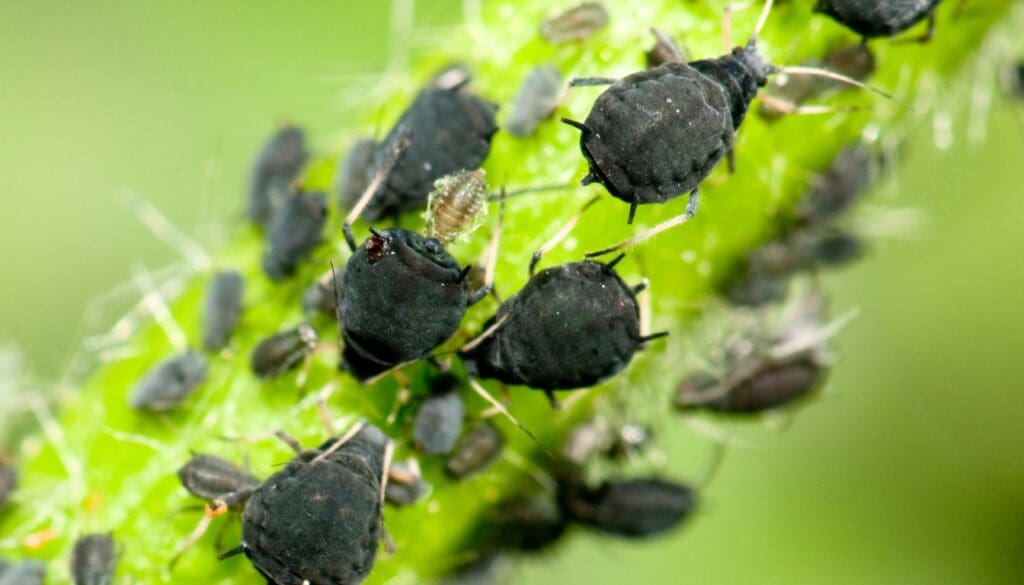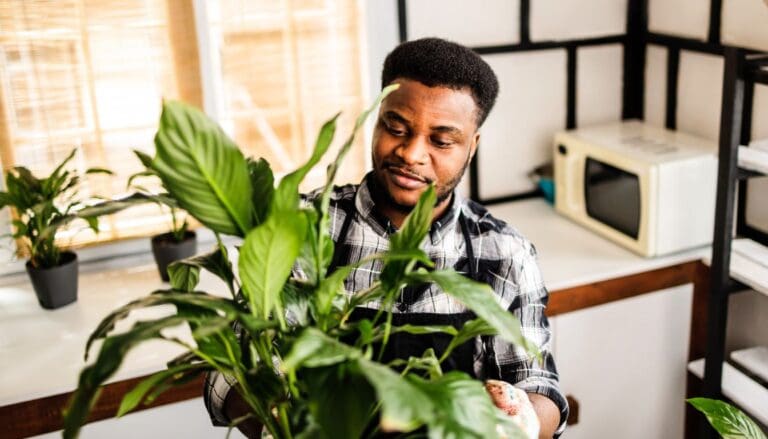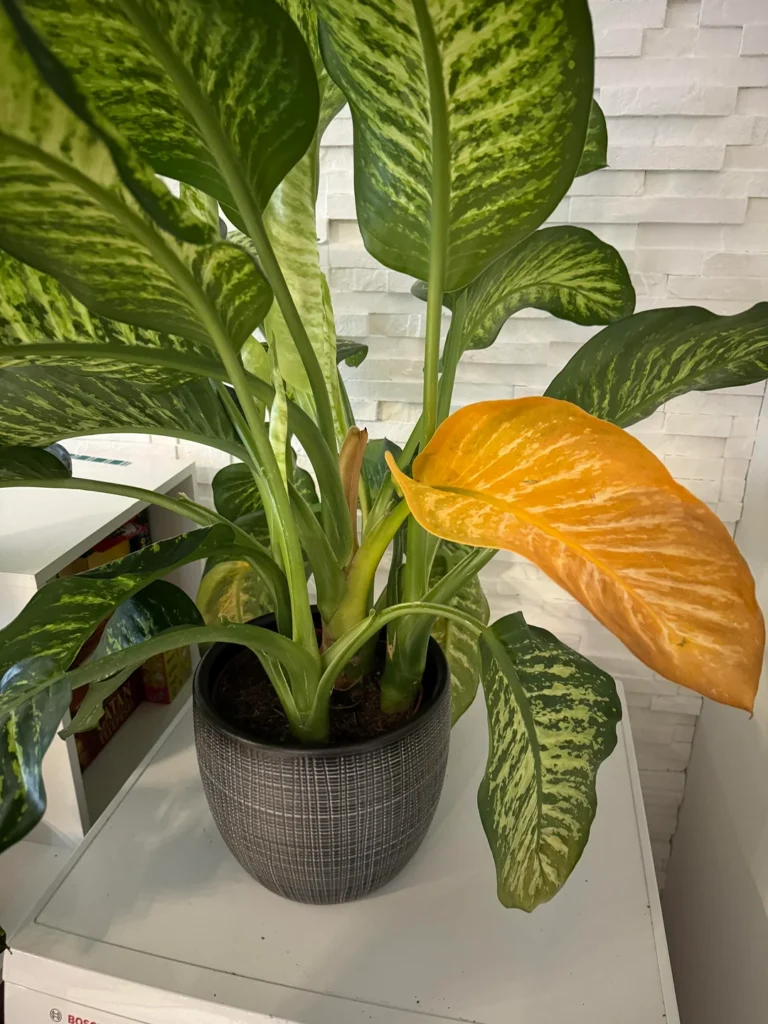5 Common Summer Houseplant Pests and How to Stop Them
Summer’s usually a good time for my houseplants, but, wow, the bugs really show up when it gets warm. I’m always looking for ways to keep my plants healthy and safe from those pesky summer pests.
Learning about these bugs helps me spot problems early. That way, I can actually enjoy my plants instead of stressing over them.
Please note: Simplify Plants is reader-supported. As an Amazon Associate, I earn from qualifying purchases made by our readers with no extra cost added to you all! Some links in the post are affiliate links and I get a commission from purchases made through links in the post.
1) Aphids: Tiny green bugs sucking plant sap

Whenever I spot those tiny green bugs clustered on my houseplants, I know I’m dealing with aphids. They love to hang out on new stems and hide underneath leaves.
They suck out the plant’s sap, which makes the leaves wilt or curl. Aphids multiply fast in summer, so I try to check my plants often—missing them for even a week can mean a real headache.
Sticky residue on leaves is a big clue aphids are around. I gently spray the leaves with water to knock them off. Sometimes I’ll mix a bit of mild soap with water and lightly coat the leaves—seems to work without hurting the plant.
Ladybugs are great little helpers, so I’ll add some to my plants if I can find them. They love eating aphids and do a solid job keeping things in check.
If I see a leaf that’s too far gone, I’ll just trim it off and toss it out. Keeping my plants strong with decent water and sunlight helps them fight off pests, too.
If a plant keeps getting aphids, I move it away from the others. Isolating it helps slow the spread—sometimes that’s all you can do.
2) Spider Mites: Tiny webs and yellow specks on leaves

Spider mites are tiny, almost invisible bugs that can really mess up my houseplants in the summer. I usually notice them when I see fine, silky webs between the leaves and stems.
If I look close, I might see tiny yellow or white dots where the mites have sucked out the leaf juices. Leaves start looking dusty or turning yellow—never a good sign.
The webs are easy to miss at first, but once I spot them, I know I’ve got to act. I move the plant away from the others to keep the mites from spreading.
Washing the leaves with water (either with a spray bottle or a gentle shower in the sink) helps knock them off. Sometimes I’ll wipe the leaves with a damp paper towel.
If mites stick around, I spray with soapy water or neem oil. I try to avoid strong chemicals at home—no thanks.
Keeping the air humid helps, since spider mites like it dry. I mist my plants or use a humidifier to make things less comfy for mites.
Checking my plants regularly in summer helps me spot any trouble early.
3) Mealybugs: White cottony clusters on stems

I see mealybugs as tiny, white, cottony clumps on my plants’ stems and leaves. They suck out sap, making leaves look yellow and weak, and they’re especially fond of warm, humid spots—so summer is prime time.
When I spot mealybugs, I move fast. I dab them with a cotton swab dipped in rubbing alcohol, which takes them out on contact.
If there’s a bigger problem, I’ll gently wipe the plant with a soft cloth or give it a shower with lukewarm water. I’m not a fan of harsh chemicals, so I use insecticidal soap or neem oil instead.
I always spray under the leaves, since that’s where they love to hide. Checking all my plants regularly is a must—catching an infestation early makes life so much easier.
I isolate any affected plants, just to be safe. After treating, I clean pots and the space around my plants, because mealybugs can hide in soil or little cracks.
By staying on top of things and acting quickly, I can usually keep my houseplants healthy through the summer.
4) Whiteflies: Small white flying insects around plants

Whiteflies can be a real pain in the summer. They’re tiny, white, and if I brush the plant, they’ll fly up in a cloud. I usually find them hiding on the underside of leaves.
Whiteflies suck sap from my plants, which can make the leaves turn yellow and weak. Sometimes I notice a sticky substance called honeydew on the leaves—it can attract ants or even cause black mold.
To spot whiteflies early, I check my plants a lot. I’ll gently shake the leaves and watch for those little white bugs flying up.
If I spot them, I start by washing the leaves with water. I’ll use insecticidal soap or neem oil spray, but I always follow the instructions carefully—better safe than sorry.
If a leaf is really infested, I just remove it and throw it away in the trash (not my compost). Sticky yellow traps help too; the adult whiteflies get stuck and can’t lay more eggs. It doesn’t solve everything, but it helps.
I try not to over-fertilize, since soft leaves seem to attract whiteflies. Good airflow and not crowding plants also helps.
5) Fungus Gnats: Small black flies near soil surface

I keep seeing fungus gnats buzzing around my houseplants in summer. These tiny black flies hang around the top of the soil. The adults are harmless, but their larvae can mess up plant roots.
Whenever I spot them, I check for damp soil—they love it wet. I try not to overwater and let the soil dry out before watering again.
For the adults, I use yellow sticky traps right on the soil. They catch gnats quickly and help me keep track of how bad it is.
If I’m worried about larvae, I’ll sprinkle a thin layer of sand or diatomaceous earth on the soil. That keeps larvae from reaching the surface and discourages new eggs.
If things get worse, I’ll mix up a bit of hydrogen peroxide (one part peroxide to four parts water) and water my plants with it. It helps kill larvae without hurting my plants, but I only do it once or twice.
I always clean up fallen leaves and dead plant bits from the pot. That takes away hiding spots and food for gnats.
By staying alert and keeping my watering in check, I can usually keep fungus gnats under control.
How Pests Thrive in Summer
I always see more pests on my houseplants when the weather heats up. Summer just makes it easier for bugs to multiply and stick around.
Environmental Factors Affecting Infestations
Warm, humid air speeds up the life cycles of most pests. More heat means insects like spider mites, aphids, and whiteflies reproduce faster. With my windows open more, bugs can sneak inside.
Sudden changes in temperature or watering can stress my plants out. Weak plants are just easier targets for pest infestations. Fans or air conditioners can dry things out or create drafts, which isn’t great for houseplants.
Extra moisture from frequent watering or summer rain can attract fungus gnats. If there are piles of leaves or standing water, those become hiding spots for larvae and eggs.
Identifying Early Warning Signs
I try to check my plants a lot during summer. Sticky leaves, tiny webs, or yellow spots are strong hints that pests are around.
When I peek under the leaves and along the stems, sometimes I spot tiny bugs or moving specks. White powder, sudden leaf drop, or curled leaves usually mean something’s up.
A small flashlight is actually super helpful. Good lighting helps me see pests hiding in nooks and around the soil. Noticing these signs early makes a big difference.
Safe and Effective Treatment Methods

I want my houseplants to thrive all summer, so I stick with treatments and habits that actually work. Focusing on safe options and prevention gives my plants the best chance.
Natural Remedies vs. Chemical Controls
When I spot pests, I almost always start with natural remedies—they’re safer for pets, kids, and my plants. A simple soap and water spray works for soft-bodied pests like aphids and spider mites. Neem oil is another go-to for me; it works on a bunch of bugs and isn’t as harsh as most store-bought sprays.
If the bugs just won’t go away, I’ll consider chemical controls. I look for products labeled safe for indoor plants and follow the instructions exactly. Never more than recommended, and I wear gloves. I always move the plant to a well-ventilated spot before using anything strong.
Here’s a quick comparison:
| Natural Remedies | Chemical Controls |
|---|---|
| Soap and water spray | Insecticidal soap |
| Neem oil | Systemic pesticides |
| Rubbing alcohol swabs | Synthetic insecticides |
I check my plants a few days after treating to make sure the pests are actually gone.
Tips for Preventing Future Outbreaks
To keep pests away, I inspect new plants before bringing them inside. I always peek under leaves and around the soil. Clean pots and fresh potting soil help a ton, so I don’t skip those steps.
Regularly dusting leaves makes it harder for bugs to settle. If my plants are crowded, I’ll use a small fan for better airflow—pests love still, damp air.
Watering right is key. I let the soil dry a bit between waterings, since most pests like it moist. If I spot any trouble, I quarantine the plant right away.
Quick checklist:
- Check new plants for bugs
- Use clean pots and fresh soil
- Dust leaves often
- Improve airflow
- Avoid overwatering
- Quarantine infested plants
Frequently Asked Questions
I’ve seen houseplants get attacked by all kinds of pests in summer, from flying bugs to tiny brown invaders. It’s always frustrating to spot bugs on my leaves or in the soil, but there are ways to stop and prevent them.
What are the common types of pests found in houseplant soil?
I often notice fungus gnats and sometimes even root mealybugs living in houseplant soil. These pests can damage roots and make the soil unhealthy for my plants.
How can I identify which pests are infesting my indoor plants?
I usually look for things like sticky leaves or weird cottony spots. Sometimes I’ll spot webs or even tiny bugs flying around.
Yellow or browning spots? That’s another red flag. I’ll also peek at the soil—if anything’s crawling, well, that’s not great.
What are some effective methods for eliminating flying bugs from my houseplants?
Letting the soil dry out between waterings has made a big difference for me, since fungus gnats need moist soil to stick around.
Sticky traps are handy for catching the adult bugs. I sometimes sprinkle a thin layer of sand on top of the soil—honestly, it’s a simple trick to keep them from laying more eggs.
Why are there tiny brown bugs on my indoor plants and how do I remove them?
Those little brown bugs? Nine times out of ten, they’re aphids or spider mites.
I’ll rinse the plants off with water or gently wipe the leaves with a damp cloth. Sometimes, I’ll mix a bit of mild soap with water and give the leaves a light spray.
Can you suggest some ways to prevent pests from infesting indoor plants?
I always check new plants for any hitchhikers before bringing them inside.
Overwatering is a big no-no, so I try to avoid that and wipe down the leaves every so often. Using well-draining soil just makes everything easier, honestly.
What should I do if I find tiny bugs living in the soil of my houseplants?
Whenever I spot bugs in my houseplant soil, I usually scoop out the top layer and swap it with fresh soil. Sometimes I just let the soil dry out a bit longer than usual between waterings—bugs really seem to hate that.
I’ve had some luck with yellow sticky traps, too. If things get out of hand, I’ll reach for insecticidal soap and hope for the best.
Recommended Garden Supplies
| Product Image | Our Recommended Gardening Supplies | Check Offers! |
|---|---|---|
Top Top
Top
Top
Top
Top
Top
Top
Top | rePotme Houseplant and Tropical Classic Potting Soil Mix | Check Offer On Amazon |
 Top
Top
Top
Top
Top
Top
Top
Top | Espoma Organic Indoor Plant Food | Check Offer On Amazon |
 Top
Top
Top
Top
Top
Top
Top
Top | GooingTop LED Grow Light 6000K Full Spectrum Clip Plant Growing Lamp | Check Offer On Amazon |
 Top
Top
Top
Top
Top
Top
Top
Top | Soil Moisture Meter | Check Offer On Amazon |
 Top
Top
Top
Top
Top
Top
Top
Top | Govee Hygrometer Thermometer, Bluetooth Enabled! | Check Offer On Amazon |
 Top
Top | LEVOIT Humidifiers for Large Room(Best For Plants) | Check Offer On Amazon |
 Top
Top
Top
Top
Top
Top
Top
Top | Upgraded DIY Automatic Drip Irrigation Kit, 15 Potted Houseplants Support | Check Offer On Amazon |
 Top
Top
Top
Top
Top
Top
Top
Top | Stainless Steel Heavy Duty Gardening Tool Set | Check Offer On Amazon |
 Top
Top
Top
Top
Top
Top
Top
Top | Bonide Insecticidal Soap | Check Offer On Amazon |
 Top
Top
Top
Top
Top
Top
Top
Top | Bonide 32 oz Spray Neem Oil for Organic Gardening | Check Offer On Amazon |
 Top
Top
Top
Top
Top
Top
Top
Top | Garden Safe Fungicide | Check Offer On Amazon |






